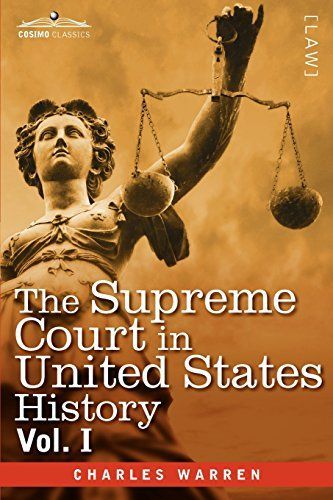
The Supreme Court in United States History
The Supreme Court in United States History is a three-volume history of the U.S. Supreme Court, detailing its establishment, the major cases reviewed and decided by the Court, the historical events surrounding cases and decisions, and the effects that Supreme Court decisions had on the public. Author Charles Warren often references newspaper and magazine articles and letters in an attempt to capture the spirit of the times. Written with one eye on the Court and one eye on people, The Supreme Court in United States History was "an attempt to revivify the important cases decided by the Court and to picture the Court itself from year to year in its contemporary setting." Volume I describes Supreme Court History from 1789 to 1821, including the establishment of the first courts and the circuit, state sovereignty and neutrality, The Mandamus Case, impeachment and treason, Pennsylvania and Georgia against the Court, The Bank of the United States, and various Chief Justices throughout this time period. CHARLES WARREN (1868-1954) was an American legal historian and lawyer. Warren graduated from Harvard University and Harvard Law School, and received his Doctorate from Columbia University. In 1894, he founded the Immigration Restriction League with fellow Harvard graduates Prescott Hall and Robert DeCourcy Ward. He authored several legal history books, including A History of the American Bar, The Supreme Court in United States History, and The Making of the Constitution, and won the Pulitzer Prize for History in 1923. Warren was the Assistant Attorney General from 1914 to 1918 during Woodrow Wilson's Presidency and drafted the Espionage Act of 1917.